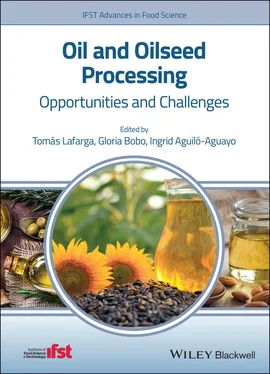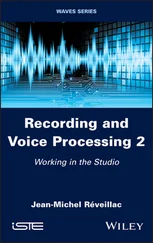Marco Garcia‐Vaquero,School of Agriculture and Food Science, University College Dublin, Dublin, Ireland TEAGASC, Food Research Centre, Dublin, Ireland
Antonia Garrido‐Frenich,Department of Chemistry and Physics, Analytical Chemistry Area, Research Centre for Mediterranean Intensive Agrosystems and Agri‐Food Biotechnology (CIAIMBITAL), Agrifood Campus of International Excellence ceiA3, University of Almería, Almería, Spain
Editha Giese,Institute of Safety and Quality of Milk and Fish Products, Max Rubner‐Institut, Federal Research Institute of Nutrition and Food, Kiel, Germany Department of Life Sciences, Hamburg University of Applied Sciences (HAW Hamburg), Hamburg, Germany
Jordi Giné‐Bordonaba,IRTA, Postharvest Program, Edifici Fruitcentre, Parc Científic i Tecnològic Agroalimentari de Lleida, Lleida, Catalonia, Spain
Andreu Gual‐Grau,Universitat Rovira i Virgili, Departament de Bioquímica i Biotecnologia, Nutrigenomics Research Group, Tarragona, Spain
Néstor Gutiérrez‐Méndez,Faculty of Chemical Sciences, Autonomous University of Chihuahua, Chihuahua, México
Douglas G. Hayes,Department of Biosystems Engineering and Soil Science, University of Tennessee, Knoxville, TN, USA
Maria Hayes,Food BioSciences Department, Teagasc Food Research Centre, Ashtown, Dublin, Ireland
José L. Hidalgo‐Ruiz,Department of Chemistry and Physics, Analytical Chemistry Area, Research Centre for Mediterranean Intensive Agrosystems and Agri‐Food Biotechnology (CIAIMBITAL), Agrifood Campus of International Excellence ceiA3, University of Almería, Almería, Spain
Brijesh K. Tiwari,TEAGASC Food Research Centre, Dublin, Ireland
Tomás Lafarga,Department of Chemical Engineering, University of Almería, Almería, Spain
Chloe Leclerc,IRTA, Postharvest Program, Edifici Fruitcentre, Parc Científic i Tecnològic Agroalimentari de Lleida, Lleida, Catalonia, Spain
José Luis Martínez‐Vidal,Department of Chemistry and Physics, Analytical Chemistry Area, Research Centre for Mediterranean Intensive Agrosystems and Agri‐Food Biotechnology (CIAIMBITAL), Agrifood Campus of International Excellence ceiA3, University of Almería, Almería, Spain
Begoña Muguerza,Universitat Rovira i Virgili, Departament de Bioquímica i Biotecnologia, Nutrigenomics Research Group, Tarragona, Spain
Miquel Mulero,Universitat Rovira i Virgili, Departament de Bioquímica i Biotecnologia, Nutrigenomics Research Group, Tarragona, Spain
Iolanda Nicolau‐Lapeña,Food Technology Department, University of Lleida (UDL), Lleida, Spain
Ramona Pérez‐Leal,Faculty of Agrotechnological Sciences, Autonomous University of Chihuahua, Chihuahua, México
María Janeth Rodríguez‐Roque,Faculty of Agrotechnological Sciences, Autonomous University of Chihuahua, Chihuahua, México
Agustí Romero,IRTA, Oliviculture, Oil Science, and Nuts, Mas de Bover, Constantí, Tarragona, Spain
Roberto Romero‐González,Department of Chemistry and Physics, Analytical Chemistry Area, Research Centre for Mediterranean Intensive Agrosystems and Agri‐Food Biotechnology (CIAIMBITAL), Agrifood Campus of International Excellence ceiA3, University of Almería, Almería, Spain
Nora Aideé Salas‐Salazar,Faculty of Agrotechnological Sciences, Autonomous University of Chihuahua, Chihuahua, México
Rogelio Sánchez‐Vega,Faculty of Zootechnics and Ecology, Autonomous University of Chihuahua, Chihuahua, México
Mayra Cristina Soto‐Caballero,Faculty of Agrotechnological Sciences, Autonomous University of Chihuahua, Chihuahua, México
Manuel Suárez,Universitat Rovira i Virgili, Departament de Bioquímica i Biotecnologia, Nutrigenomics Research Group, Tarragona, Spain
Juan Manuel Tirado‐Gallegos,Faculty of Zootechnics and Ecology, Autonomous University of Chihuahua, Chihuahua, México
Cristina Torres‐Fuentes,Universitat Rovira i Virgili, Departament de Bioquímica i Biotecnologia, Nutrigenomics Research Group, Tarragona, Spain
1 Production and Consumption of Oils and Oilseeds
Tomás Lafarga
Department of Chemical Engineering, University of AlmerÃa, AlmerÃa, Spain
Lipids, which are together with proteins and carbohydrates the main constituents of plant and animal cells, can be broadly defined as substances such as fats, oils, or waxes that dissolve in organic solvents but not in water. Lipids, oil‐bearing nuts, and animal fats have been used by man for centuries. These were used for lighting, as cosmetics, applied to weapons or other utensils, and as foods, mainly as sources of energy or as medicines. Nowadays, the use of oils has expanded to several food applications which include cooking, frying, baking shortenings, salad dressing, and flavor carriers, among others. Each of these applications requires oils with specific physical and chemical properties (Gupta 2017). These properties will therefore determine the quality of the vegetable oil, which starts with high quality oilseeds or oil‐bearing nuts or fruits. Several factors which include maturity of the oilseed, climatic conditions, harvest conditions, handling of the harvested raw material, and storage can significantly affect the quality of the end product.
Broadly, oil extraction from seeds or beans is achieved by pressing and/or extraction using an organic solvent, generally hexane. Mechanical and thermal pre‐treatments can also be used to improve extraction yields (Savoire et al. 2013). Other oils such as avocado, palm, or olive oil are obtained after pressing of the whole fruit. Although some oils such as olive oil are used without further treatment than filtering, most of the currently commercialized edible oils are refined in some measure prior to commercialization (Gunstone 2011b). The term refining refers to the removal of several major and minor impurities and its main goal is to produce high quality oils with optimal properties to satisfy the different oil applications.
Oil production from oilseeds has been steadily increasing by an average of 12.3% annually over the last three decades: for the main oils – palm (palm kernel plus palm oil), rapeseed, soybean, and sunflower seed oil – there is a production increase of 231.1%, from 45.73 Mt in 1990 to 151.42 Mt in 2017 (UN 2019). Despite recent advances in oil extraction techniques, this impressive increase in oil production could not have been achieved without an increase in the quantity of seeds harvested. Indeed, during the same time period, the production of palm fruits, rapeseeds, soybean, and sunflower seeds followed the same trend from 159.29 Mt in 1990 to 794.31 Mt in 2017, representing an 17.7% annual increase (UN 2019).
The aim of the current chapter is to give an overview of the production of the most relevant vegetable oils and oilseeds, focusing on soybeans, rapeseeds, sunflower seeds, palm fruits, and the oils derived thereof. This chapter will also discuss the production quantities and trade of other common oilseeds such as groundnuts, maize, or sesame seeds as well as novel sources for oil production that are expected to soon gain an increased industrial relevance.
1.2 Oilseeds and Oils: Production and Trade
The majority of the currently utilized vegetable oils are obtained from seeds or beans. Sources for vegetable oil extraction can be divided into three main categories: (i) those plants that are not grown for oil production, where oil can be considered as a by‐product; (ii) those crops that cannot be changed on a yearly basis, generally trees; and (iii) those crops that are planted annually such as sunflower, linseed, or rape (Gunstone 2011a). Currently, from the total oil and fat production, approximately 14% is utilized as a starting material for the oleochemical industry, 79–80% is used for human food as spreads, frying oils, or salad oils, and the remaining 6% is used as animal feed, and therefore, indirectly used for human food production (Gunstone 2011a). Crushing of soybeans or oilseeds into cake and oil dominates total usage and it is expected that 90% of the world soybean production and 86% of world production of other oilseeds will be crushed in 2027 (FAO 2018). The current section will discuss current applications as well as the production and trade of the most important edible oils and oil sources.
Читать дальше












